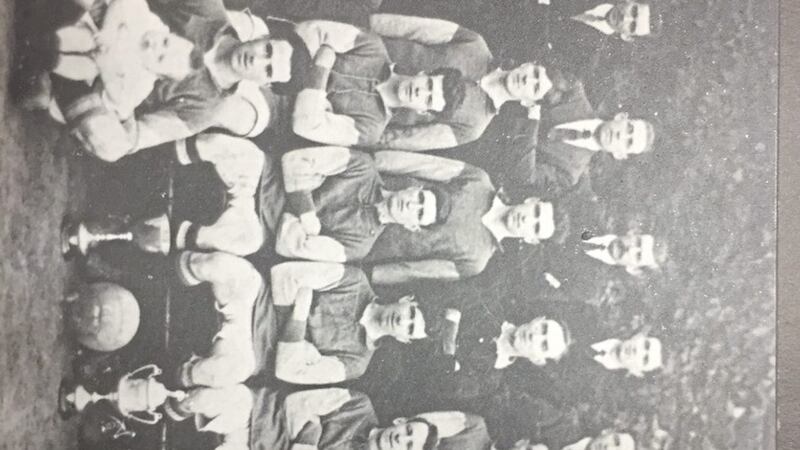One of the consequences of the Covid-19 crisis has been that sport has come to a shuddering halt across the globe. A century ago, a different crisis created a sporting vacuum in many parts of Belfast.
In the summer of 1920, Belfast was in turmoil after the expulsions of thousands of Catholic (and left wing) employees by loyalists from the shipyard and other places of employment across the city. As the deaths mounted and violence raged, a decision was taken by Belfast Celtic to withdraw from all competitions due to fears for the safety of its players and fans.
A prominent Divis Street businessman, John Kennedy, wrote a letter to the Irish News seeking to garner interest in a new Falls League that would allow the minority community in the city to have a sporting outlet during those desperate days.
The league was an immediate success, with thousands drawn to its fixtures in the Falls Park. Additional pitches were secured from the corporation for use and an agreement was reached to allow the league to play its games in Shaun’s Park- later to be rechristened MacRory Park.
Although based in the west of the city, teams from across Belfast participated in the first year of the league, with the Carrick Hill-based Alton United claiming the honours as league winners in the 1920-21 season.
Charity was a recurring theme throughout the short duration of the league, with proceeds from the gates at league fixtures regularly being donated to the dependents of those struck down in the violence which continued to rage across the city. Every year, the Nazareth Lodge Cup was held to give financial support to the south Belfast boys’ home.
The Expelled Workers Cup was organised annually as a knock-out competition for the league’s teams, raising money for the fund set up to support families of the thousands of men forced from their workplaces. Representative teams from England, Scotland and other parts of Ireland would also travel to play against combined teams representing the Falls League, bringing donations with them for the expelled workers.
The Irish News gave extensive coverage to the league and its fixtures each week, with ‘The Onlooker’ columnist adding his own colour to both the analysis of the games and conduct of players and supporters alike.
The success of the league was such that, by its second year, it was able to organise two divisions with more than 30 teams, including Lurgan Celtic, on condition that the mid-Ulster side cover the cost of transport by train for visiting sides, whose players were mostly made up of expelled workers.
The league was further bolstered by the addition for the 1921-22 season of all teams from the Ardoyne and District League after the two leagues had played a charity match in the early summer of 1921 for the family of Malachy Halfpenny, a World War I veteran and Highfield FC player who had been abducted from his home and brutally killed by an RIC/B Special murder gang.
The Falls League’s success would lead to it becoming affiliated with the fledgling Dublin-based Football Association of Ireland, earning the league an invitation to nominate a team for the newly organised FAI Cup.
In the first year, Markets-based West Ham won the qualifying competition to earn the right to be the league’s representative, and a massive crowd was on hand at Shaun’s Park to see the south Belfast side earn a First Round draw against Shelbourne, before losing the replay in Dublin.
In the subsequent season, the Micky Brennan-led Alton United secured the right to be the league’s representative, starting on a spectacular journey that would see them ultimately reach the FAI Cup Final in Dublin on St Patrick’s Day 1923, where they would see off heavily-fancied Shelbourne before a crowd of 15,000 in Dalymount Park to claim an historic victory for Carrick Hill and for the Falls League.
Alas, the league would not last much longer, and by 1924 Belfast Celtic would once again return to competitive play in the Irish League.
For several years, the Falls League served its intended purpose of providing sporting relief for the beleaguered residents of the Catholic communities under siege across the city whilst also providing a means to raise funds for the families of those worst impacted by the conflict.
Beyond the archives of the Irish News, there is little by way of evidence that the league ever existed, apart from a framed picture of the famed Alton United team which has pride of place on the walls of the Carrick Hill community centre in memory of the area’s proudest sporting moment.









